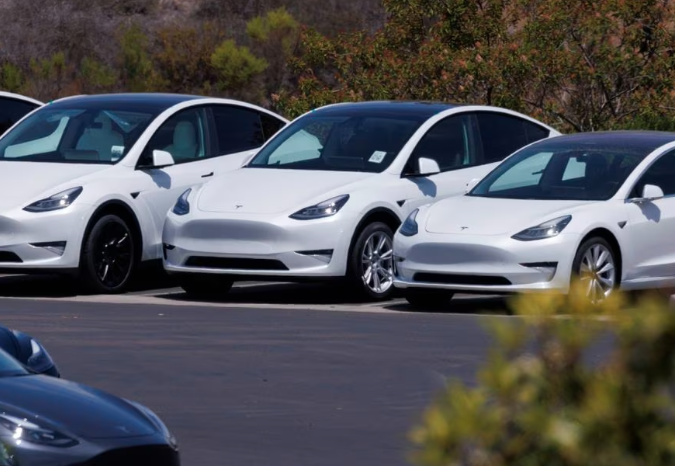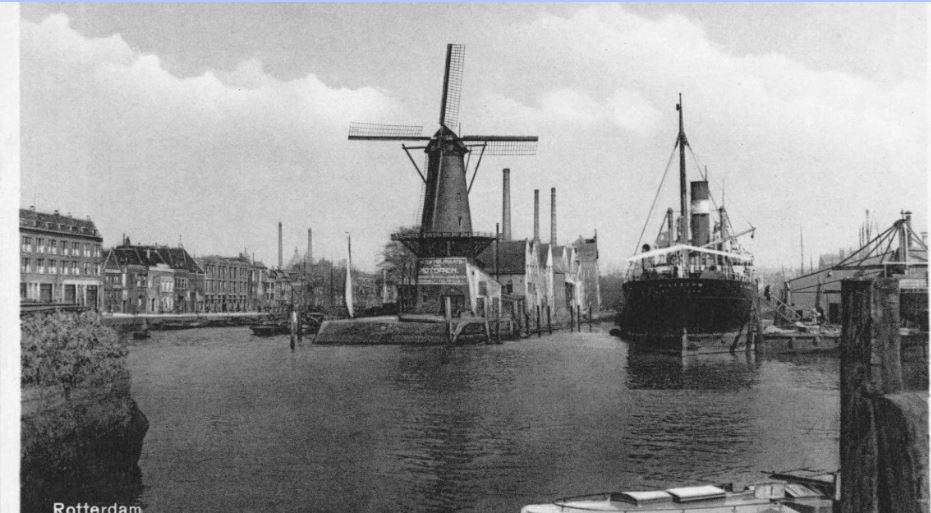In the ongoing debate on climate change, one of the most pressing challenges is fostering effective international cooperation. This column examines the success of the 1987 ‘Montreal Protocol’ in phasing out harmful chlorofluorocarbons to offer new insights into how international agreements can be made more effective in solving global public goods problems. The Protocol’s realistic, enforceable targets created a virtuous cycle of innovation and ambition that ultimately led to its remarkable success, demonstrating the power of induced innovation in environmental agreements.
In the ongoing debate on climate change, one of the most pressing challenges is fostering effective international cooperation. While the need for emissions reductions is clear, the path towards unified global action remains fraught with obstacles. The difficulties are often tied to free-rider issues and the complexities of designing economically binding agreements (Barrett 1994, Battaglini and Harstad 2016). Despite decades of negotiation, global climate agreements like the Paris Accord have struggled to meet their ambitious goals, with many countries falling short of their commitments (Tavoni et al. 2012).
Amidst the gloom, history offers a rare success story: signed in 1987, The Montreal Protocol on Substances that Deplete the Ozone Layer succeeded in phasing out harmful chlorofluorocarbons (CFCs). In recent research, I show that the Montreal Protocol not only curbed the use of CFCs but also sparked a wave of innovation that was crucial to its success (Dugoua 2023). By placing innovation at the centre of the discussion, my paper offers new insights into how international agreements can be made more effective in solving global public goods problems.
Figure 1 The Antarctic ozone hole


Note: The image, captured on 21 September 2023, depicts the Antarctic ozone hole, with the ozone layer represented in green. The extensive depletion of ozone over Antarctica, visible as a significant thinning or ‘hole’, is a reminder of the environmental damage caused by chlorofluorocarbons (CFCs). However, the ongoing recovery of the ozone layer highlights the effectiveness of global cooperation in environmental protection.
Source: NASA Ozone Watch
A global agreement to reduce CFC emissions
In the late 1970s, scientists warned that chlorofluorocarbons might be depleting the ozone layer, reducing the extent to which humans were protected from harmful solar radiation. This alarming discovery quickly rose to the top of the global environmental agenda. By 1987, high-income countries had negotiated the Montreal Protocol, an agreement to phase out CFCs in industrial activities. Within a decade, CFC production and consumption had decreased by more than 80%.
Under the Montreal Protocol, signatories committed to a schedule of reduction targets for the production and consumption of CFCs. The agreement also included trade restrictions with non-parties and threats of banning trade in products made using ozone-depleting substances. These trade restrictions provided a built-in enforcement mechanism, making the protocol economically binding – a feature that set it apart from most other environmental agreements.
The Montreal Protocol’s role in driving innovation during the ozone crisis remains a topic of debate. Some, like Richard E. Benedick, the chief US negotiator at Montreal, argued that the agreement spurred a significant research effort to develop CFC substitutes (Benedick 2009). Others, however, contend that these substitutes were already available or that the industry supported CFC cuts because it had already achieved a breakthrough (Sunstein 2007, New York Times 2002).
Innovation as the key to ozone’s success
In my paper, I revisit the impact of the Montreal Protocol by quantitatively assessing whether the agreement spurred scientific research and technological advancements in the development of CFC substitutes. To explore this, I compile a list of 14 molecules identified by scientists and industry experts as the most promising alternatives to CFCs. I then track how often they were mentioned in scientific articles and patents over time.
The central hypothesis is that the Montreal Protocol acted as a powerful signal, motivating firms and researchers to intensify their efforts in finding CFC alternatives. This should have led to a noticeable increase in patents and scientific publications related to these molecules. To test this, I compare the CFC substitutes with a comparison group of molecules known as hazardous air pollutants (HAPs), used in similar industrial applications but unrelated to ozone depletion. 1
Figure 2 Counts of patents and articles mentioning CFC substitutes


Note: Panel a shows that the number of patents and articles mentioning CFC substitutes increased after the signature of Montreal in 1987. Panel b confirms that while patents for the average CFC substitute increased, those for the average comparison molecule remained stable.
As illustrated in Figure 2, before 1987, there was minimal patenting and publication activity related to CFC substitutes, suggesting that the agreement was not anticipated. However, following the Montreal Protocol, there was a large increase in patents and scientific articles mentioning these molecules. Similar trends are estimated with a difference-in-differences and a synthetic control approach. These results provide strong empirical evidence that the Montreal Protocol induced research and innovation on CFC substitutes. 2
Reconciling theory and empirics
From the perspective of the theory of international environmental agreements (Barrett 1994, Harstad et al. 2019), the success of the Montreal Protocol in spurring innovation is counterintuitive. Game theory models predict that agreements only succeed when cooperation is relatively easy – when costs are low and benefits high. This led many to interpret Montreal’s success as evidence that reducing CFC emissions was cheap, implying substitutes were readily available. But how could such a strong induced innovation response be observed if substitutes were already available?
My paper reconciles theory with empirical evidence by reframing our understanding of a ‘low-cost’ treaty. Rather than simply enforcing already available technologies, Montreal reflected what the industry deemed achievable with sufficient R&D investment. This didn’t mean the necessary knowledge and technologies were already in place. The targets were neither ‘business as usual’ nor overly ambitious, reflecting realistic technological objectives.
Achieving significant reductions was initially relatively straightforward through improved efficiency, recovery, and recycling. However, for sectors like refrigeration and air-conditioning, a complete phase-out required developing new molecules. Despite some molecules being known in theory, extensive research on their properties was necessary, along with experimentation to adapt them to specific industrial applications. From the 1987 perspective, the challenge could be represented as a marginal abatement cost curve, which initially had a low and flat slope for substantial emission cuts but rapidly became steeper and more uncertain, as illustrated in Figure 3.
Figure 3 Illustration of the marginal cost of abating CFC emissions in 1987


Note: Initial CFC emission reductions were believed to be low-cost, while more ambitious cuts appeared increasingly expensive. The grey vertical dashed line shows the emissions cuts agreed upon in Montreal.
While the Montreal targets were not overly ambitious – especially compared to the full phase-out that environmental NGOs advocated for – they were enough to catalyse firms in the right direction, inducing innovation. Crucially, the Protocol included an enforcement mechanism with trade restrictions and threats to ban products made with CFCs. This economic binding made the agreement credible, incentivising firms to invest in R&D.
Progress on CFC substitutes then allowed the industry to return to the negotiation table with upgraded ambitions. As a result, two additional amendments were agreed upon in 1990 and 1992, which aimed for a full ban and increased the number of regulated substances. The success in protecting the ozone layer should thus be seen as a series of agreements progressively ramping up ambitions for emission reduction, like a repeated cooperation game, where each round of rather modest but binding reductions spurs further innovation, lowering future abatement costs and improving prospects for continued cooperation. Innovation here was crucial in enabling ambitions to ratchet up.
Lessons for climate change
The experience of Montreal teaches us that a low-ambition but binding treaty can pave the way for effective global environmental action. Starting with modest, enforceable goals could, therefore, be a viable strategy for climate negotiations. But the presence of enforcement mechanisms is crucial: the Paris Agreement lacks the economic binding that made Montreal effective, supporting recent calls for deeper integration of trade and climate negotiations (Samans 2019).
While climate and ozone issues share similarities, they differ significantly in the scale of technological change needed. Unlike ozone, which affected a narrow set of industrial actors, primarily in the chemical industry, climate change impacts nearly every sector. In this sense, the Montreal Protocol was a sectoral agreement – a narrower approach that helped stakeholders identify feasible technological pathways.
This contrasts sharply with the Paris Agreement’s broad scope, making developing industry-specific low-carbon futures challenging. The success of the Montreal Protocol in targeting the chemical industry suggests that a more focused approach could yield better results in climate negotiations. This insight reinforces recent proposals for global sectoral climate technology agreements. Such targeted agreements could help reduce technological uncertainties and accelerate investments in decarbonisation (Victor et al. 2019).
In conclusion, the Montreal Protocol’s success demonstrates the power of induced innovation in environmental agreements. Setting realistic, enforceable targets created a virtuous cycle of innovation and ambition that ultimately led to its remarkable success. As we grapple with the complexities of climate change, these lessons from the Montreal Protocol offer valuable guidance for crafting more effective global environmental policies. The key lies in creating binding agreements that foster innovation, even if initial ambitions are modest, and in focusing efforts on specific sectors where technological pathways can be more clearly defined.
Source : VOXeu





